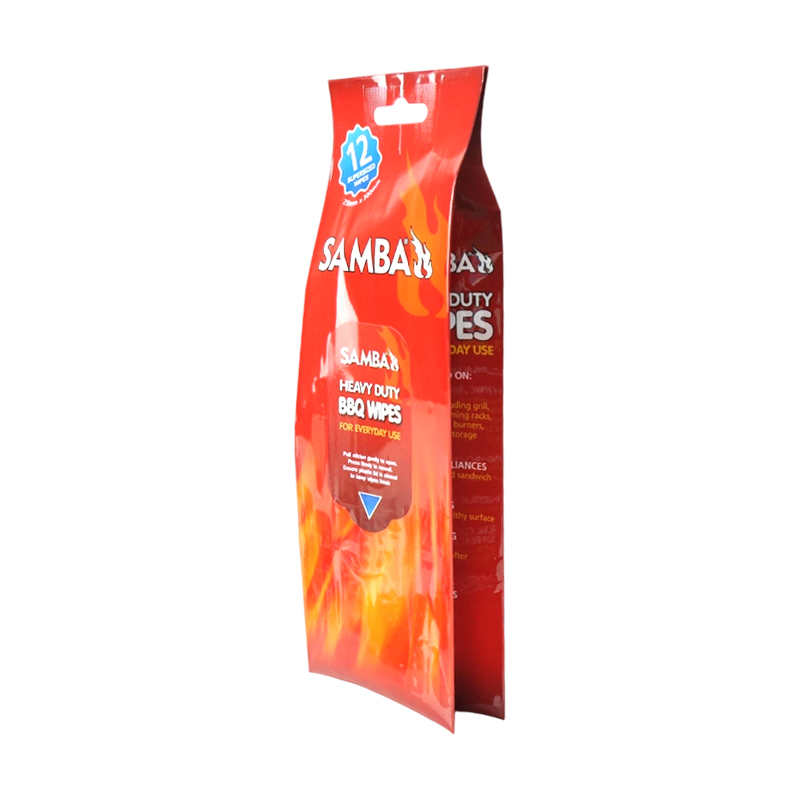2025-07-24
In an era where hygiene, convenience, and product presentation are more important than ever, labeled wet wipe packaging bags have emerged as a strategic innovation in the personal care and sanitation product sectors. These packaging solutions are not only functional and durable but also designed with an emphasis on usability, aesthetic appeal, and brand visibility.
As consumers demand more practical and portable hygiene options, and as brands compete to differentiate themselves, labeled wet wipe packaging bags are becoming a vital tool for manufacturers looking to meet expectations on both performance and presentation.
What Are Labeled Wet Wipe Packaging Bags?
Labeled wet wipe packaging bags are flexible pouches designed to house moist towelettes or disinfectant wipes, typically sealed with a reclosable label. This label acts as both a functional closure system and a branding platform, enabling easy access while preserving product freshness.
Unlike rigid tubs or simple pouches, these bags integrate high-quality labels—often made from durable film or laminated material—that serve as tamper-proof seals and resealable closures. The result is a packaging format that blends practicality, portability, and professional presentation.
Key Features and Benefits
1. Freshness Retention:
The laminated construction of these bags, combined with an effective resealable label, helps prevent moisture loss. Consumers benefit from wipes that stay wet, soft, and effective over time.
2. Resealable Convenience:
The label acts as a user-friendly lid, allowing repeated opening and closing without compromising the integrity of the packaging. This ensures continued hygiene and usability, especially for on-the-go consumers.
3. Customizable Label Branding:
Brands can leverage the label area for logos, usage instructions, QR codes, and vibrant graphics, turning every bag into a mini-billboard that reinforces brand identity and encourages product loyalty.
4. Lightweight and Portable:
Compared to canisters or boxes, labeled wet wipe packaging bags are compact, lightweight, and easy to carry. They are for personal use in handbags, diaper bags, or car compartments.

5. Environmental and Cost Advantages:
These bags use less plastic than rigid alternatives, which can reduce environmental impact and shipping costs. They are also compatible with recycled materials and recyclable components in many formats.
Applications Across Growing Markets
The versatility of labeled wet wipe packaging bags makes them suitable for a wide range of sectors:
Personal Care: Facial wipes, makeup removers, and baby wipes benefit from the freshness-preserving properties of labeled pouches.
Household Cleaning: Multi-surface or anti-bacterial wipes in labeled bags are ideal for quick clean-ups without bulky packaging.
Medical and Industrial Use: Disinfectant and alcohol wipes require packaging that maintains sterility and moisture—making labeled bags a choice.
Travel and Outdoor Products: Moisture wipes or insect repellent wipes for outdoor use are frequently packaged in labeled pouches due to their lightweight and resealable design.
Innovation in Design and Materials
Manufacturers are continuously evolving the structure of these bags to enhance performance and appeal:
Multi-Layer Composite Films: These structures combine PET, PE, and sometimes aluminum for barrier protection against moisture and contamination.
Strong Adhesive Labels: Designed for repeated use, these labels maintain their seal even after dozens of openings, ensuring durability.
Matte and Gloss Finishes: Aesthetic enhancements such as matte laminates or spot gloss printing help brands differentiate products visually.
Biodegradable Options: In response to environmental concerns, some producers are now offering eco-friendly labeled bags using compostable films or recyclable label adhesives.
Market Trends and Consumer Expectations
The wet wipes market has expanded significantly post-pandemic, with heightened awareness of cleanliness and disinfection in daily life. As consumers gravitate toward single-use hygiene products, their expectations for both efficacy and sustainability are growing.
Customization is also a key trend. Brands are using the printable area on labels for seasonal promotions, limited edition designs, and personalization. Smart packaging—with scannable QR codes for traceability or digital engagement—is also being integrated into label designs.